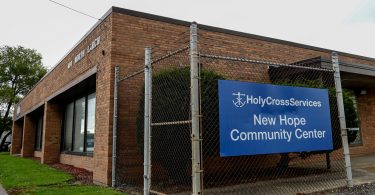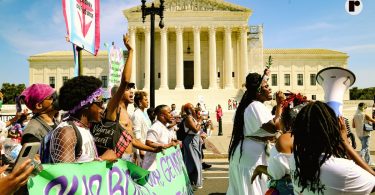When Scotland voted to add questions about sexuality and transgender status to its census, and clarified the definition of “sex,” it was so controversial it led to a court case.
It got so heated that the director of Fair Play for Women, a gender-critical organization, argued: “Extreme gender ideology is deeply embedded within the Scottish Government, and promoted at the highest levels including the First Minister.”
Data, like the census, “is often presented as being objective, being quantitative, being something that’s above politics,” says Kevin Guyan, author of “Queer Data.”
Listening to the deliberations in parliament breaks that illusion entirely. “There’s a lot of political power at play here,” says Guyan, “It’s very much shaped by who’s in the room making these decisions.”
Great Britain has been a ‘hotspot’ for the gender-critical movement. “You just really revealed the politics of what was happening at the time, particularly in association with an expanded anti-trans movement,” explains Guyan.
Ultimately, the LGBTQ community was counted in Scotland, which was heralded as a historic win.
This makes sense, says Amelia Dogan, a research affiliate in the Data plus Feminism Lab at MIT. “People want to prove that we exist.”
Plus, there are practical reasons. “To convince people with power, especially resource allocation power, you need to have data,” says Catherine D’Ignazio, MIT professor and co-author of the book “Data Feminism.”
When data isn’t collected, problems can be ignored. In short, D’Ignazio says, “What’s counted counts.” But, being counted is neither neutral nor a silver bullet. “Even when we do prove we exist, we don’t get the resources that we need,” says Dogan.
“There are a lot of reasons for not wanting to be counted. Counting is not always a good thing” they say. D’Ignazio points to how data has repeatedly been weaponized. “The U.S. literally used census data to intern Japanese people in the 1940s.”
Nell Gaither, president of the Trans Pride Initiative, faces that paradox each day as she gathers and shares data about incarcerated LGBTQ people in Texas.
“Data can be harmful in some ways or used in a harmful way,” she says, “they can use [the data] against us too.” She points to those using numbers of incarcerated transgender people to stoke fears around the danger of trans women, even though it’s trans women who face disproportionate risk in prison.
This is one of the many wrinkles the LGBTQ community and other minority communities face when working with or being represented by data.
There is a belief by some data scientists that limited knowledge of the subject is OK. D’Ignazio describes this as the “hubris of data science” where researchers believe they can make conclusions solely off a data set, regardless of background knowledge or previous bodies of knowledge.
“In order to be able to read the output of a data analysis process, you need background knowledge,” D’Ignazio emphasizes.
Community members, on the other hand, are often primed to interpret data about their communities. “That proximity gives us a shared vocabulary,” explains Nikki Stephens, a postdoctoral researcher in D’Ignazio’s Data plus Feminism lab.
It can also make more rich data. When Stephens was interviewing other members of the transgender community about Transgender Day of Remembrance, they realized we “think more complicated and more meaningful thoughts, because we’re in community around it.”
Community members are also primed to know what to even begin to look for.
A community may know about a widely known problem or need in their community, but they are invisible to institutions. “It’s like unknown to them because they haven’t cared to look,” says D’Ignazio.
That is how Gaither got involved in tracking data about incarcerated LGBTQ people in Texas in the first place.
Gaither received her first letter from an incarcerated person in 2013. As president of the Trans Pride Initiative, Gaither had predominately focused on housing and healthcare for trans people. The pivot to supporting the LGBTQ incarcerated community came out of need—trans prisoners were not given access to constitutionally mandated healthcare.
Gaither sought a legal organization to help, but no one stepped in—they didn’t have expertise. So, Gaither figured it out herself.
As TPI continued to support incarcerated, queer Texans, the letters kept rolling in. Gaither quickly realized her correspondences told a story: definable instances of assault, misconduct, or abuse.
With permission from those she corresponded with and help from volunteers, Gaither started tracking it. “We’re hearing from people reporting violence to us,” says Gaither, “we ought to log these.” TPI also tracks demographic information alongside instances of abuse and violence, all of which are publicly accessible.
“It started off as just a spreadsheet, and then it eventually grew over the years into a database,” says Gaither, who constructed the MySQL database for the project.
Gaither’s work especially focuses on the Prison Rape Elimination Act (PREA), which ostensibly includes specific protections for transgender people.
To be compliant with PREA, prisons must be audited once every three years. Numerous investigations have shown that these audits are often not effective. TPI has filed numerous complaints with the PREA Resource Center, demonstrating inaccuracies or bias, in addition to tracking thousands of PREA-related incidents.
“We are trying to use our data to show the audits are ineffective,” says Gaither.
Gaither has been thinking about data since she was a teenager. She describes using a computer for the first time in the 1970s and being bored with everything except for dBASE, one of the first database management systems.
“Ever since then, I’ve been fascinated with how you can use data and databases to understand what your work with data,” Gaither says. She went on to get a master’s in Library and Information Sciences and built Resource Center Dallas’s client database for transgender health.
But gathering, let alone analyzing, and disseminating data about queer people imprisoned in Texas has proven a challenge.
Some participants fear retaliation for sharing their experiences, while others face health problems that make pinpointing exact dates or times of assaults difficult.
And, despite being cited by The National PREA Resource Center and Human Rights Clinic at the University of Texas School of Law, Gaither still faces those who think her data “doesn’t seem to have as much legitimacy.”
Stephens lauds Gaither’s data collection methods. “TPI collect their data totally consensually. They write to them first and then turn that data into data legible to the state and in the service of community care.”
This is a stark contrast to the current status quo of data collection, says Dogan, “people, and all of our data, regardless of who you are, is getting scraped.” Data scraping refers to when information is imported from websites – like personal social media pages – and used as data.
AI has accelerated this, says D’Ignazio, “it’s like a massive vacuum cleaning of data across the entire internet. It’s this whole new level and scale of non-consensual technology.”
Gaither’s method of building relationships and direct correspondence is a far cry from data scraping. Volunteers read, respond to, and input information from every letter.
Gaither has become close to some of the people with whom she’s corresponded. Referring to a letter she received in 2013, Gaither says: “I still write to her. We’ve known each other for a long time. I consider her to be my friend.”
Her data is queer not simply in its content, but in how she chooses to keep the queer community centered in the process. “I feel very close to her so that makes the data more meaningful. It has a human component behind it,” says Gaither.
Guyan says that data can be seen as a “currency” since it has power. But he emphasizes that “people’s lives are messy, they’re complicated, they’re nuanced, they’re caveated, and a data exercise that relies on only ones and zeros can’t necessarily capture the full complexity and diversity of these lives.”
While Gaither tallies and sorts the incidents of violence, so it is legible as this “currency,” she also grapples with the nuance of the situations behind the scenes. “It’s my family that I’m working with. I think it makes it more significant from a personal level,” says Gaither.
Guyan explains that queer data is not just about the content, but the methods. “You can adopt a queer lens in terms of thinking critically about the method you use when collecting, analyzing, and presenting all types of data.”
(This story is part of the Digital Equity Local Voices Fellowship lab through News is Out. The lab initiative is made possible with support from Comcast NBCUniversal.)







